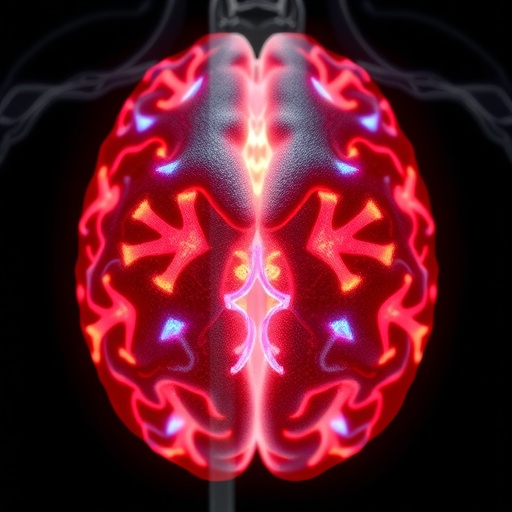In a groundbreaking study published in Biological Sex Differences, researchers have unveiled critical insights into the fundamental sex differences that influence how cocaine induces neuroplastic changes in specific neurons within the mouse nucleus accumbens core. This region is pivotal for the reward and motivation systems in the brain, implicating striking variances in behavioral responses to cocaine use between male and female mice. The study, led by Chapp and colleagues, meticulously investigates how cocaine impacts D1 receptor (D1R) and D2 receptor (D2R) medium spiny neurons (MSNs) differently based on sex, opening avenues for understanding the biological underpinnings of addiction.
Cocaine addiction is a complex disorder that not only affects neurotransmitter systems but also alters the very structure and function of neurons in key brain areas involved in reward and reinforcement. Previous research has highlighted behavioral disparities in addiction severity between genders, yet the precise neurobiological correlates have remained less explored. Chapp et al. aimed to fill this knowledge gap by scrutinizing the response of D1R- and D2R-expressing MSNs in the nucleus accumbens, both of which play distinct yet interrelated roles in dopamine signaling and behavior modulation.
Utilizing advanced methodologies such as optogenetics and in vivo imaging techniques, the team was able to observe real-time changes in neuron activity and structure post-cocaine exposure. Their findings revealed that male and female mice exhibit fundamentally different neuroadaptive responses to cocaine, driven by both genetic and hormonal factors that influence dopamine receptor signaling pathways. These discoveries are particularly relevant as they suggest a biological basis for the observed differences in addiction vulnerability and treatment efficacy between genders.
Moreover, the study highlights the dynamic nature of MSNs in response to environmental and pharmacological stimuli. In male mice, cocaine led to pronounced structural plasticity in D1R-MSNs, demonstrating increased spine density—an indicator of synaptic strengthening. Conversely, female mice exhibited a different pattern of neuroplasticity, with significant alterations noted in D2R-MSNs. Such observations may provide substantial insights into why males and females respond differently to cocaine treatment and relapse.
Additionally, hormonal influences, particularly estrogen and testosterone, were considered potential modulators of these sex differences in response to cocaine. The authors posit that the fluctuating levels of these hormones during the estrous cycle in females might impact the neurobiological response to cocaine, further complicating the addiction landscape. Consequently, understanding these hormonal effects could lead to sex-specific therapeutic strategies for treating substance use disorders.
The results of this research are not merely academic; they hold significant implications for the development of targeted interventions that could optimize treatment for both male and female patients similarly affected by addiction. The fact that neuroplastic changes in response to cocaine are not uniform across sexes underscores the urgency for personalized medicine in psychiatry. By tailoring therapeutic approaches to address these fundamental biological differences, clinicians may better support recovery in diverse populations.
As awareness increases regarding the need for sex-specific research in neurology and psychiatry, this study serves as a beacon for future investigations. The findings propose a new paradigm that challenges the historically monolithic perspective on addiction, advocating for a more nuanced understanding that incorporates sex as a biological variable. This approach facilitates the unraveling of mechanisms that contribute to differential responses to drugs and potentially informs public health policies aimed at mitigating the opioid crisis and other substance-related issues.
In conclusion, the pioneering work of Chapp and collaborators significantly enriches our understanding of the sex differences in drug-induced neuroplasticity. As the field progresses towards recognizing these disparities, future research will undoubtedly broaden our comprehension of addiction and lead to innovative, effective treatments that are considerate of biological sex differences. This foundational study sets the stage for a revolution in how we approach drug dependency—one that prioritizes individual physiological and genetic variability over a one-size-fits-all method.
This research not only contributes to a deeper understanding of the biological mechanisms underlying addiction but also highlights the critical need for sex-specific research methodologies. The potential for developing more effective addiction treatments tailored to individual biological profiles represents a significant advancement in addiction science. Moving forward, further studies are anticipated that will continue to dissect the complexity of these processes, underscoring the importance of an interdisciplinary approach to tackling one of the most pressing public health crises of our time.
As the addictive potential and neuroadaptations associated with substances become clearer through research like this, the hope is that more patients will encounter therapies that are not just clinically effective, but also considerate of their unique biological make-up. Overall, this study is an essential contribution to a rapidly evolving field, leading the way toward better understanding and treatment of addiction as a multifaceted and personalized challenge.
In the spirit of advancing both knowledge and clinical practice, further investigations could leverage these insights into refining therapeutic approaches, examining neurobiological mechanisms in more detail, and expanding the focus to include a wider array of psychoactive substances. As science continues unveiling the intricacies of the human brain and its responses to drugs, the roadmap toward effective, sex-inclusive treatments looks increasingly hopeful.
Subject of Research: Sex differences in cocaine-induced neuroplasticity in the nucleus accumbens core of mice.
Article Title: Fundamental sex differences in cocaine-induced plasticity of D1R- and D2R-MSNs in the mouse nucleus accumbens core.
Article References:
Chapp, A.D., McMullan, H.M., Phan, CM.H. et al. Fundamental sex differences in cocaine-induced plasticity of D1R- and D2R-MSNs in the mouse nucleus accumbens core.
Biol Sex Differ 16, 102 (2025). https://doi.org/10.1186/s13293-025-00785-6
Image Credits: AI Generated
DOI: https://doi.org/10.1186/s13293-025-00785-6
Keywords: cocaine, neuroplasticity, sex differences, dopamine receptors, addiction, medium spiny neurons, nucleus accumbens, personalized medicine.




